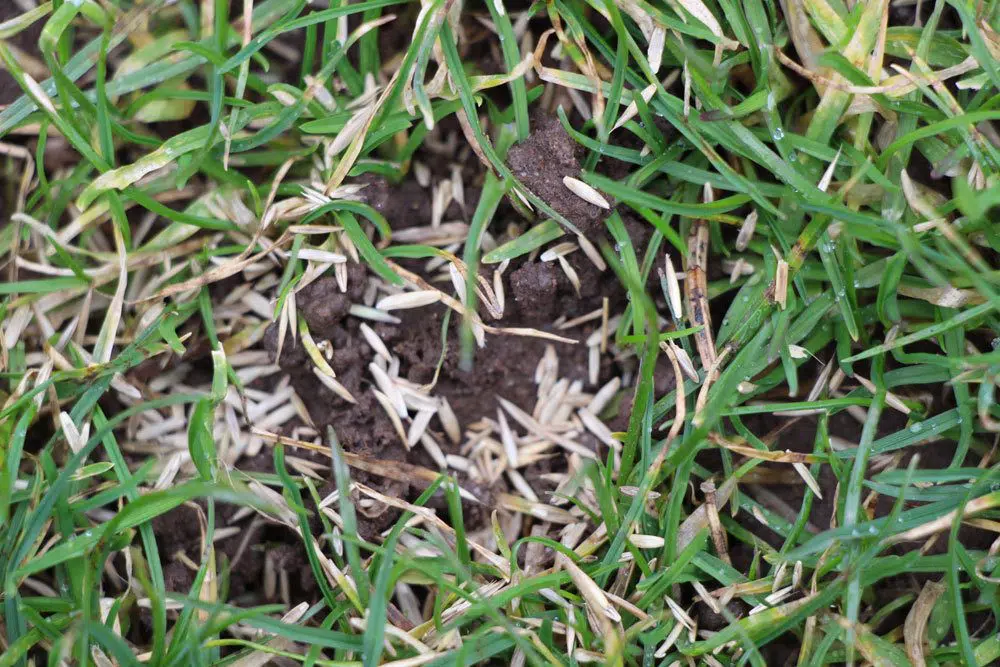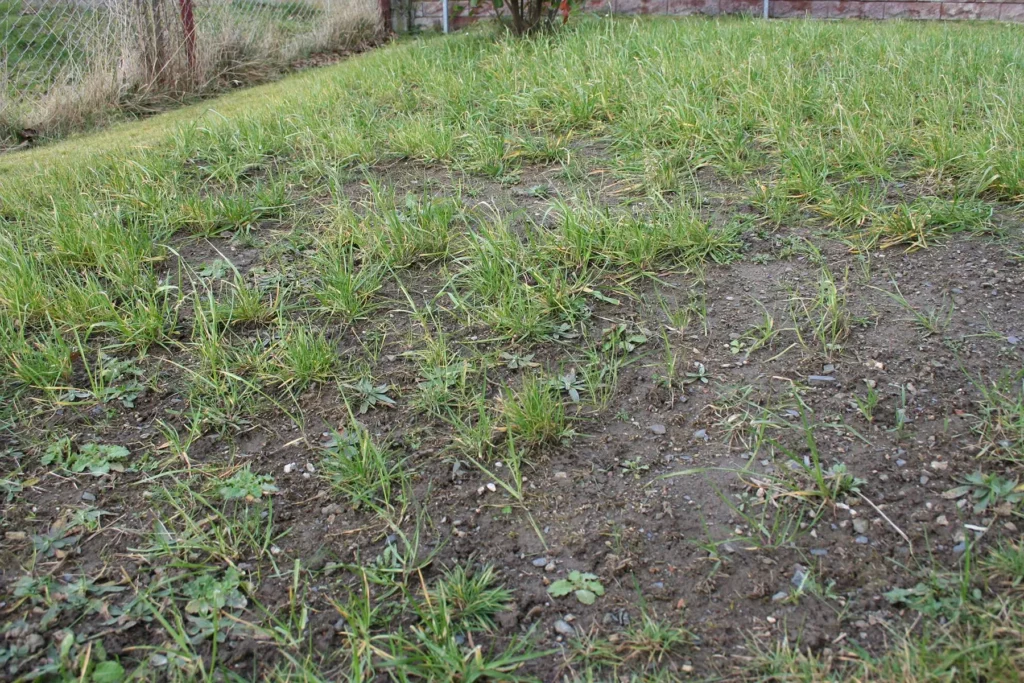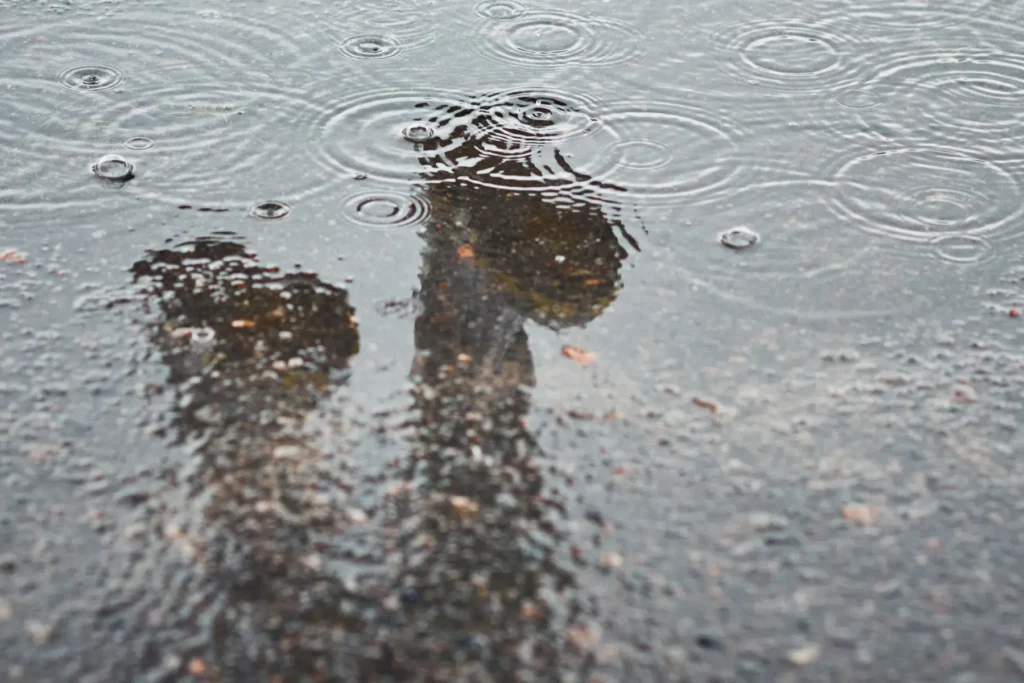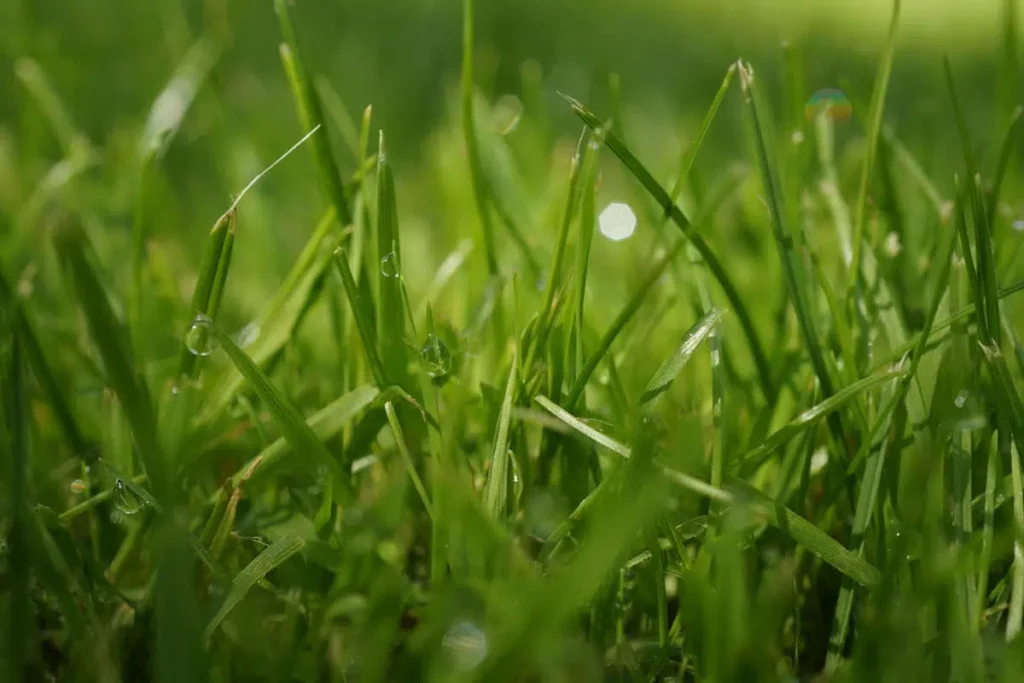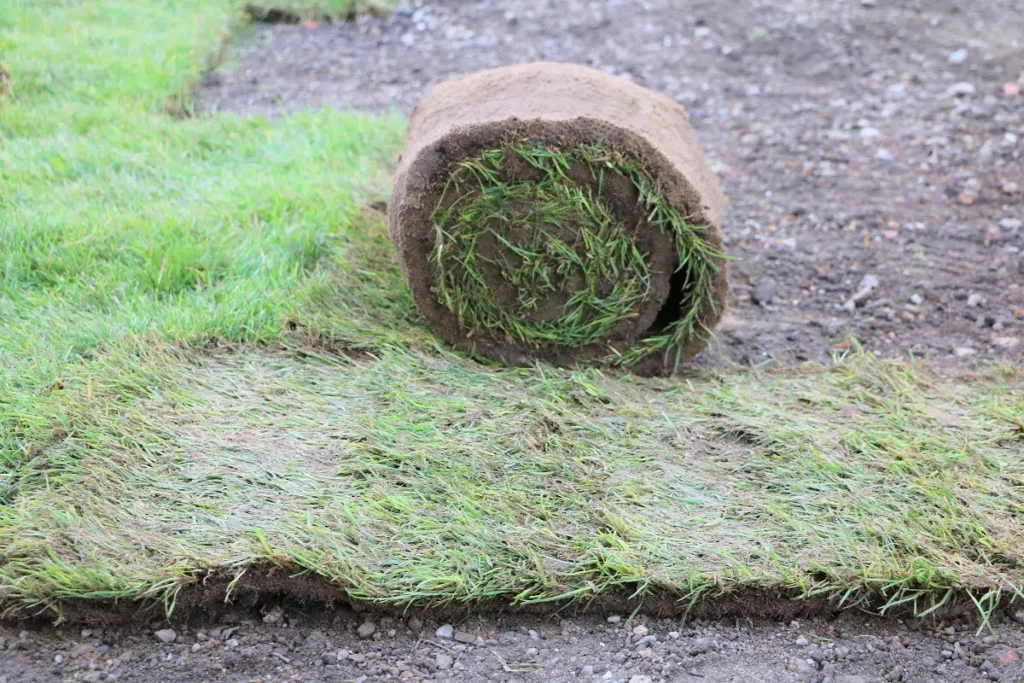A lawn has to cope with many challenges during its long life. For example, the burning sun, the pressure of weeds, a compacted soil. At the beginning, the lush green blades of grass still huddle close together. Over time, gaps appear here and there. These become more and more numerous and larger and larger. Eventually, they can neither be overlooked nor tolerated. The easiest way to close gaps in the lawn is to reseed. But this must be done correctly.
Contents
Reseeding lawn
Gaps in the lawn often appear during the summer period. This is because we like to spend a lot of time in the garden on warm days. Some places are more stressed than others. Be it that the garden chair stands on it or children play with the ball. The dark ground becomes visible and disturbs the overall appearance. That is why bare spots are a nuisance. The desire to have them quickly covered by grass again is therefore only too understandable.
Large visible gaps do not always have to appear in the lawn. Over time, the density of the grass blades can also decrease, so that the whole lawn looks unsightly. Even in this case, reseeding can be useful.
Close bare spots promptly
Smaller patches will be greened up by grass growth on their own at the beginning of the new growing season or as early as the fall. But this is not always the case. Or at least not in the way we would like. Instead of fresh, green blades of grass sprouting there again, so-called weeds spread. Many weed species are not choosy in their conquest and use every little gap to germinate. The lawn grass no longer has a chance against this competitive pressure. For this reason alone, you should only wait to reseed until the best time to do so has come.
Timing
Two seasons are good to sprinkle lawn seed in the gaps: autumn and spring.
- outside the “main season” the area is less used
- the hot temperatures are over or not yet here
- there are still enough warm days
- there is no threat of big frosts
- the seeds can therefore germinate and grow
- nevertheless, the seeds do not need to be watered constantly
Although both times are suitable, you should prefer the autumn month of September for reseeding. This will prevent bare spots from being occupied by weeds in the meantime. Some weeds, such as the undesirable grass Poa annua, also called annual bluegrass, can even germinate in the fall.
Lawn seed
After reseeding, the gaps should be closed in such a way that later these places are indistinguishable from the rest of the lawn. That is why it is important to choose the right mixture of lawn seeds for reseeding. Ideally, you have already set aside a small amount of lawn seed when creating the lawn, which you can now use for reseeding. If not, it would at least be good if you have made a note of it or can figure it out from old invoices.
Tip: If you don’t have a clue as to what seed mix you need, ask for advice at a specialty store. It will definitely help if you take pictures of the lawn from near and far and show those pictures there.
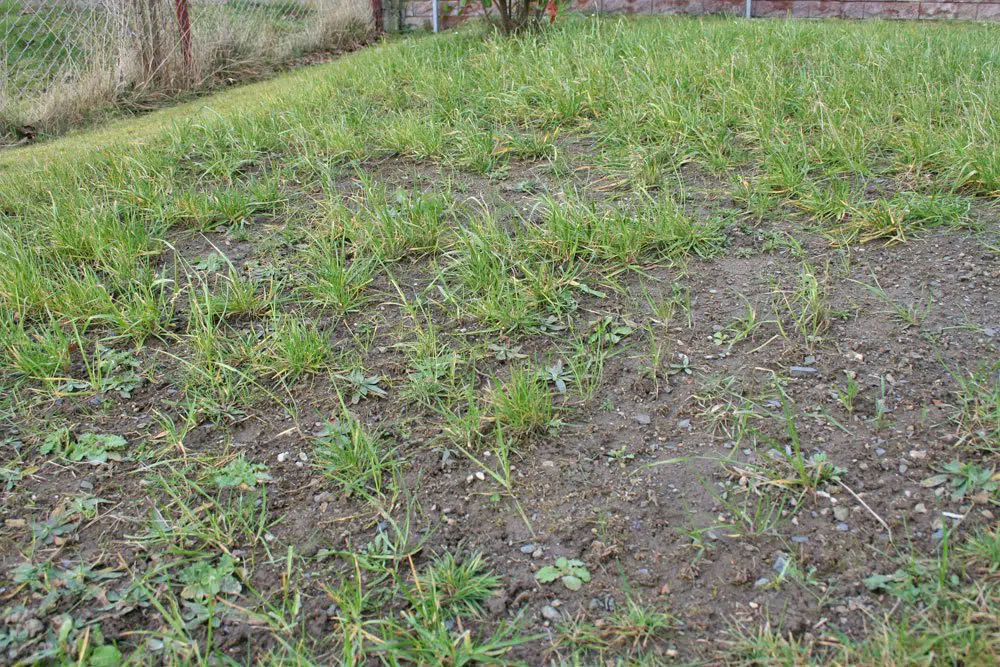
Mowing the lawn
Before you spread the seeds on the lawn, the very first step is to mow the grass.
- set the lawn mower to the lowest level
- mow the entire lawn
- after that the grass should not be longer than 2 cm
Of course, this does not change anything about the bare spots themselves. But they become more accessible, which facilitates the scattering of seeds. In addition, they are not shaded by tall blades of grass. Also, in the near future, mowing the lawn will not be necessary so quickly. This will allow the reseed to germinate and grow undisturbed.
Collect grass clippings
In principle, grass clippings may be left on the mowed lawn in large areas. The thin blades of grass dry and rot in no time. When they decompose, many nutrients are released, which thus fertilize the lawn in a natural way. However, if reseeding is imminent, the grass clippings must be collected immediately after mowing and removed from the lawn. Of course, you can also use a collection container right away.
Scarify the lawn
If you want to reseed the entire lawn, you should also scarify the entire lawn to a depth of 3 to 5 mm. It is best to do this lengthwise and crosswise.
- the soil is loosened and scarified
- the lawn seed gets better contact with the ground
- numerous shallow-rooting weeds are pulled out in the process
- lawn seed can germinate in their place
- the old grass is weakened
- new seed can establish itself better
- collect and remove combed out plant material
You can additionally scan the lawn for other weeds and remove them from it by hand. Dandelion, for example, is such a wild weed, which has a very long taproot. Small remnants of it are enough for the herb to sprout anew. Therefore, it must be deeply cut out. Of course, only if its retention is not desired. After all, the wild herb is edible and blooms beautifully.
Lawn aerification
Aerification is used to aerate the sod. This is especially recommended in the case of heavily compacted soil. This can also be responsible for the formation of bare patches. Appropriate equipment is available at the hardware store. The work takes time, but it also improves the chances of success of reseeding. However, the lawn should be sanded before reseeding.
- spread half a bucket of fine quartz sand per square meter
- spread it into the holes with a broom or rake
- this provides good drainage
- prevents renewed compaction
Prepare individual gaps
If only individual gaps are reseeded, the lawn is also mowed briefly. However, it is not necessary to scarify and aerate the lawn for reseeding the gaps. Prepare individual bare spots as follows:
- Clear the area of dead grass
- remove all root debris
- loosen the soil or roughen it with a rake
- loosen heavy soils with sand
- mix sandy soils with clay powder
Tip: If you don’t know what the soil condition is, a soil analysis can give you more detailed information.
To fertilize or not?
Some advisors recommend applying fertilizer to the reseeding area before spreading the seed. But these are mostly experts who produce or sell fertilizers. Amateur gardeners know that a lean soil makes the seed rise better. They also rely on it for lawn seeds. In fact, in practice, it turns out that sprouting is more expected on unfertilized soil. Of course, in the future, the new grasses need a sufficient supply of nutrients, like any other plant.
If the entire lawn is reseeded, timely fertilization could possibly be considered. Namely, then, if the lawn has not been fertilized for a long time and urgently needs new nutrients.
Sowing lawn seed: instructions
On small areas, you can easily scatter the lawn seed by hand. For larger areas, it is better to use a spreader. It spreads the seed more evenly. With regard to the seed thickness, follow the instructions on the seed package.
Carefully tread the reseeded area. Water the seed with a gentle stream of water, otherwise the lawn seeds may be washed away. You can then cover the seed thinly with potting soil or peat. This will ensure that the lawn seeds do not dry out so quickly.
- spread half a bucket of fine quartz sand per square meter
- spread it into the holes with a broom or rake
- this provides good drainage
- prevents renewed compaction
After sprinkling
Until the lawn seeds have germinated properly, all repaired areas should be kept evenly moist. They should also not be walked on during this time. Once the stalk length is eight inches, the area may be mowed again. But be careful not to mow more than one-third of the new growth.
Tip: If necessary, block access to the reseeded area so that it is not accidentally walked on.
Alternatives for reseeding
If soil is showing through in awkward places, patiently waiting for reseeding is not the preferred solution. Such gaps, which are clearly visible to everyone, can be alternatively reseeded as follows:
- patch the spot with sod
- cut them out beforehand in inconspicuous places
- if necessary, order a roll of turf
- cut suitable pieces from it and lay them

